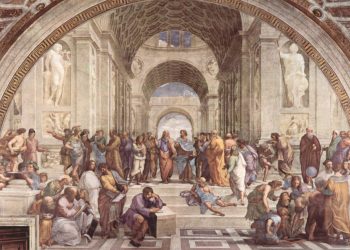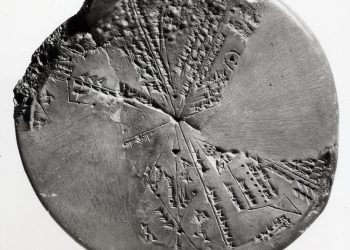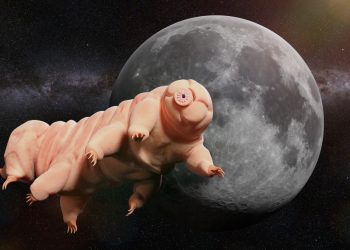The gods are omnipotent. They embody the basic characteristics of nature or human nature and social life. Accordingly, They can guide and model everything on the World Tree – life, death, love, marriage, birth, disease, fertility, misery, strength, weakness, rains, droughts, earthquakes, light, darkness, heat, cold, etc.
Simultaneously, all their actions radiate some concern for humanity or nature, regardless of how it manifests itself in this case – as a benefit or as harm. Care here is not necessarily in man’s interest; it is not directed only to his well-being, but in any case, there is a certain lasting focus on the maintenance of a basic universal principle.
On the other side, all mythological beasts in the form of demons, spirits, souls, and other supernatural creatures are much more elementary and weak.
They indeed have certain magical abilities, but these abilities are in a rather narrow area. They are used to achieve a very insignificant effect, which is more a projection of the momentary whim of the respective creature than a manifestation of a purposeful pursuit of anything.
Besides all this, the mythological beasts listed below are themselves subject to the gods, albeit to a lesser degree than humans.
They are not so vitally dependent on divine favor. Still, They are compelled to comply with it in order not to become the object of “heavenly punishment,” and it is their punishability that distinguishes them from the divine forces, which are generally unpunished.
1. Nachzehrer
2. Gugalanna
3. Harpies
Harpies are predatory and evil, unclean creatures, half-women, half-birds, the personification of devastating winds and storms, mistresses of rapid death.
Their names in Greek mythology are Calaeno, Aello, and Ocypete. They are daughters of Taumant (sea deity, son of Pontos and Gaia) and the Oceanid Electra. They are tormented by eternal hunger and inhabited the Ionian islands of Strofadi and circled the underworld’s entrances.
4. Echidna
Echidna is a fire-breathing mythological beast, half-woman, and half-snake. She is the daughter of the son and daughter of Pontos and Gaia – Fokin and Keto. She is married to Typhon, from whom she gave birth to many repulsive creatures and monsters. She was killed by the monster Argus. Her origin is from Scythia or Cilicia.
5. Hecatoncheires
The Hecatoncheires were three sons-giants of Uranus and Gaia, each with fifty heads. Their names are Briareus, Gyes, and Cottus – they represent the destructive forces of nature.
Because of the fear that they would seize his power, Uranus shackled them and hid them with the Cyclops in Gaia’s womb. They were freed from Zeus and, out of gratitude, became his allies in his battle with the Titans.
6. Cyclops
The Cyclopses were one-eyed giants, sons of Uranus and Gaia. They were presented as rude and clumsy mythical beasts but skilled blacksmiths.
The most famous Cyclopses are Arges, Brontes, and Steropes. They were thrown into the deep abyss by their father, but Zeus freed them to help the god Hephaestus in his smithy.
Out of gratitude, they forged Zeus’s lightning bolts and became his allies in his battle with the Titans.
7. Kraken
According to Norse mythology, the Kraken is a giant mythological beast that inhabits the seas, attacking ships and killing people. His body was so large that he was sometimes confused with an island.
The existence of the Kraken has been noted even in scientific texts, including the first edition of the Natural System (Systema Naturae, 1735). This piece of work is a taxonomic classification of living organisms created by the Swedish botanist Carl Linnaeus. The Kraken was classified as a cephalopod and was named Microcosmus Marinus.
Most scientists believe that the Kraken is actually a huge species of cuttlefish, whose representatives reach 18 meters in length.
8. Nian
According to ancient Chinese legends, every new Chinese year began with a battle against the mythological beast called Nian. This beast had the body of a bull and the head of a lion. Towards the end of winter, when there was no food, the beast went down to the villages to eat cattle, crops, and even people, mostly children.
To protect themselves, the villagers put food in front of their doors at the beginning of each year. It was believed that once Nian ate, he would no longer attack humans and animals. People lived in horror for a long time but learned that the legendary beast was afraid of three things – the red color, fire, and noise.
Therefore, when the new year came, the villagers placed red lanterns on the streets and red covers on the doors and windows. They also used fireworks that intimidated the beast.
Since then, Nian has stopped coming to the village. Eventually, the monster was captured by a Taoist monk, and since then, the custom of celebrating the New Year with colorful decorations and noisy fireworks has emerged.
9. Centaurs
Centaurs are mythical creatures, half-humans, half-horses. From a distance, they look like horsemen fused with their horses.
According to legends, the wise centaur Chiron, son of Cronus of the Oceanid Philera, raised the ancient Greek heroes Heracles, Theseus, Dioscuri, Jason, Achilles, Orpheus, and the god Asclepius taught them hunting, horseback riding, martial arts, music, poetry, and medicine.
Other well-known centaurs are Nessus and Foaly. Centaurs usually inhabit hard-to-reach mountains and impassable forests. Most have a wild and raw character and great strength.
10. Gorgons
The Gorgons were female monsters, daughters of Forkin, and Keto. The two older of them, Stheno and Euryale, were immortal, while the youngest, Medusa, was mortal.
Medusa was a beautiful girl, but Poseidon seduced her in Athena’s temple. The goddess turned her into a terrible creature with glazed eyes, bared teeth, protruding tongue, and snakes instead of hair.
Her gaze petrified anyone who looked her in the eye. The great hero Perseus managed to cut off her head with Hermes’ magic sword given to him.
Join the discussion and participate in awesome giveaways in our mobile Telegram group. Join Curiosmos on Telegram Today. t.me/Curiosmos











